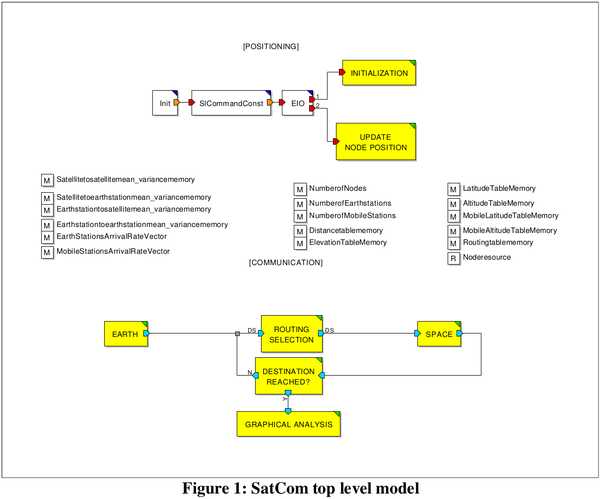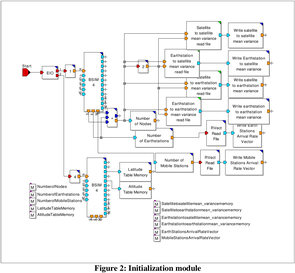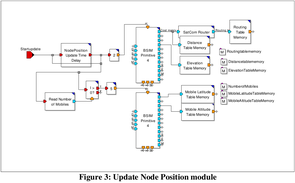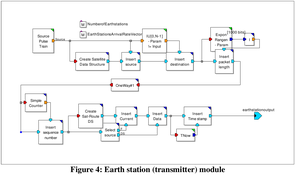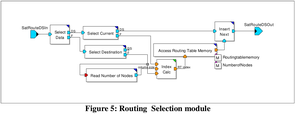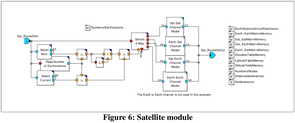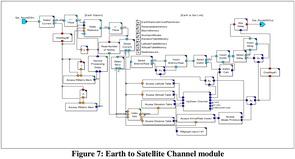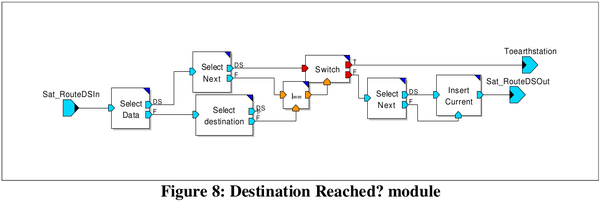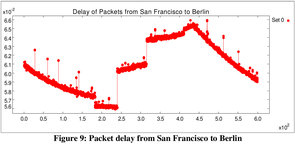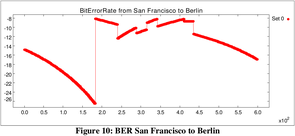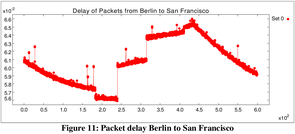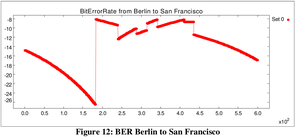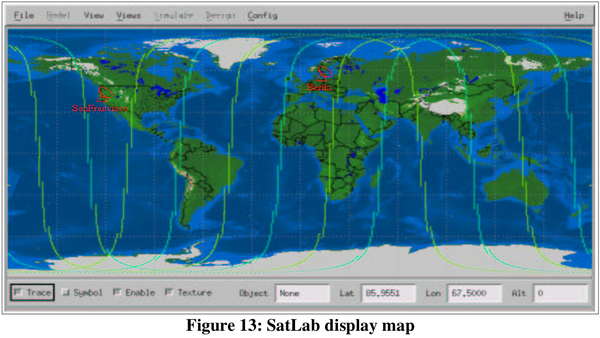Mainnavigation
Subnavigation
BORDER
Pagecontent
- You are here:
- Home »
- MLDesigner »
- Examples »
- Satellite Applications »
- Satellite Communication System
Satellite Communications System
Dynamic link analysis of Low Earth Orbit (LEO) communication systems
This is a generic model for analyzing the performance of a satellite-based communications system. The number and location of earth station and the satellite constellation can be configured. The model also accommodate mobile nodes that can connect to the ground stations.
This version of the model shows two ground stations, located in Berlin and San Francisco, linked by a constellation of communications satellites. The top level view of the model is shown in Figure 1 below.
The model is comprised of seven major modules: Implementation, Update Node position Earth (transmitter), Space (Communication in Progress), Route Selection, Destination Reached and Graphical Analysis (receiver and statistics.) Each of these modules is briefly described below.
The Initialization module (Fig.2) establishes communication with SatLab and initiates a configuration script that defines the earth stations and the satellite constellation and the date and time for the simulation so SatLab can start the satellites in the correct orbital positions. MLDesigner also initiates the SatLab simulation so it can respond to MLDesigner commands.
The Update Node Position module (Fig.3) calculates position data to update MLDesigner and passes information between MLDesigner and SatLab. MLDesigner send requests for position update information to SatLab at intervals specified by a parameter, SatLab calculates and returns the relative position and velocity of all nodes and updates the shortest path routing table.
The Earth/Transmitter module represents all terrestrial node transmitters. It generates packets (data structures) from earth nodes located at each ground station location, inserts a source address, a destination address, a message length and a time stamp, and to the routing selection module for transmission to the appropriate satellite.
The routing selection module module finds the next hop of a packet from the Routing Table and inserts this information in the Next field of the Sat Route DS. The Routing Selection module abstracts the operations of all terrestrial and satellite routers.
The Space (Communication in Progress) module receives the packet data structure from the Routing Selection module and passes it to the appropriate transmission channel (Earth to Earth, Earth to Satellite, Satellite to Earth, Satellite to Satellite) which sends it to the "Destination Reached" module.
The details of the Earth-to-Satellite communication channel is shown below. The other channel models are similar.

